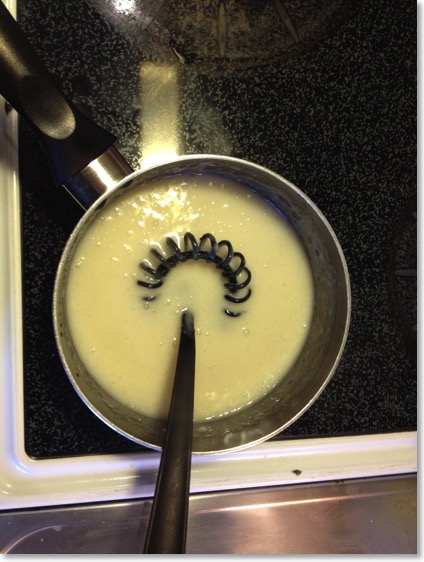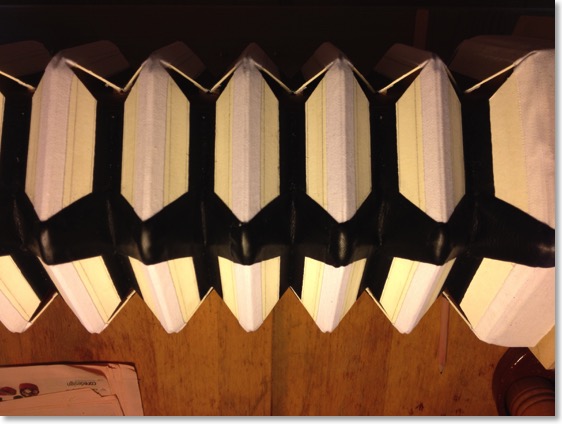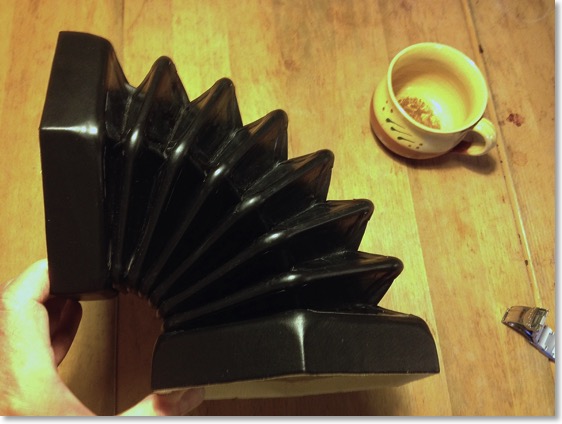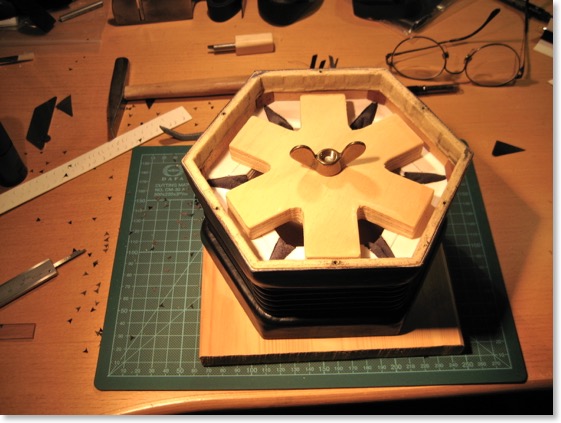Side-track = tuning bellows. They are a little easier than “real” bellows, since there is no reed pan inside, hence no need for the “inner angles” - the tapered side of the bellows frames. Here’s a few glimpses from the process:

Mixing water-flour-glue size, for gluing the long cotton tapes around the peak of the folds. Two other types of glue are used: ordinary PVA for hinges and Fiebing’s Leathercraft Cement for the gussets.

Gussets in place.

Done - no original bellows paper were hurt during the making of this ;-).
I used cheap wrapping paper...

Then clamp and rest (not the tuning bellows).
Note that the clamp doesn’t simply add pressure to the edge of the frames - it compresses that which can be compressed = the folds. Inside the clamp is another six-armed thingie which the folds are pressed against.
Next Previous